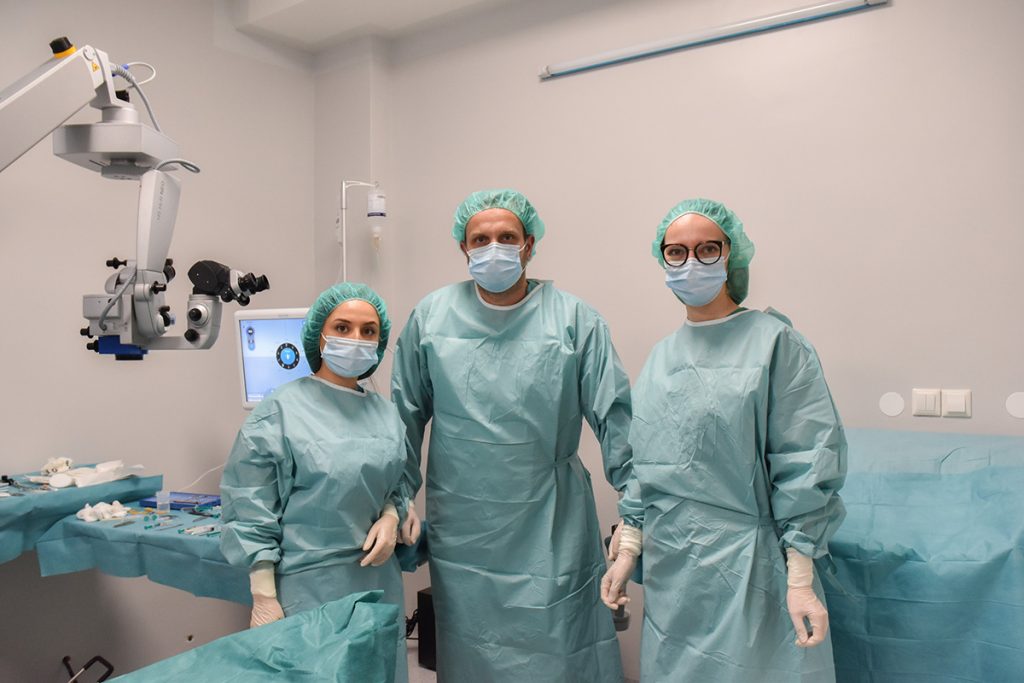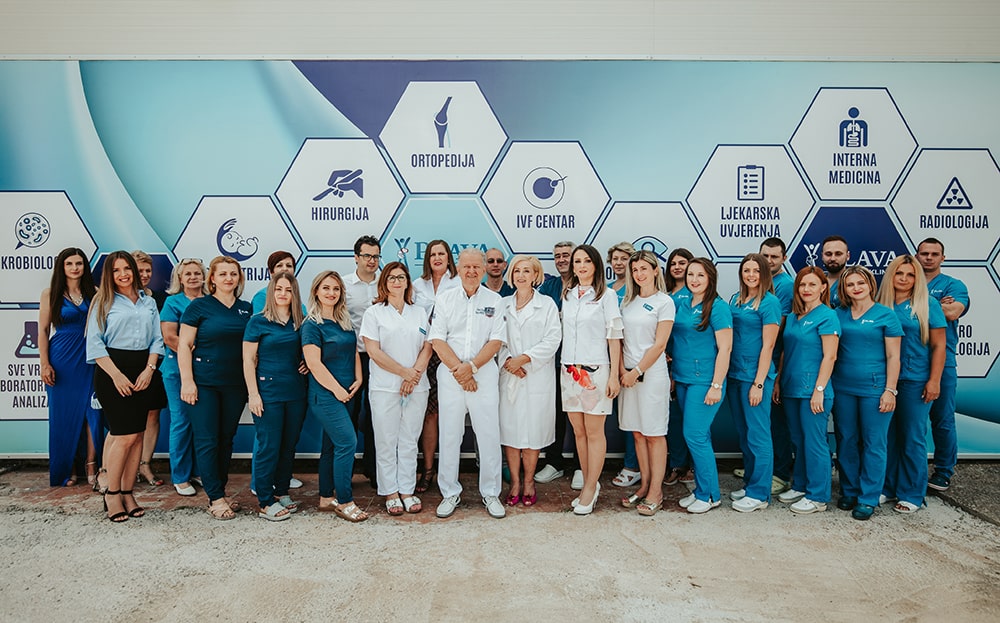
Cataracts develop very slowly, which usually means that the symptoms are barely noticeable. There's a good chance you won't notice anything until it starts blocking your light, and then symptoms like:
- Blurred or blurred vision.
It is difficult for you to recognize the cataract yourself immediately at its beginning because it starts with small changes that affect your vision. To begin with, things around you will appear a little blurry but you will not react because you will get used to such vision. Blurred vision only gets worse over time, making the world around you blurry.
-Changes in the way you see colors
Your view of the world becomes more cloudy with brown or yellow streaks.
- Problems with night driving
Activities like driving a car start to become very difficult and tiring. Every movement you make at night begins to be difficult. Flashes from other cars can completely distract you from driving, and they can be painful for your eyes.
-Glare problems during the day
Clouding of the lens of the eye can cause irregular refraction of light entering the eye which can lead to the appearance of a halo effect. The halo effect is a phenomenon in which we see the shape of a ring around each light source. This is another reason why driving at night is very dangerous if you have cataracts.
-Double images in the area of the eye affected by the cataract
An eye disorder where a person instead of one object sees double ie. two objects is called diplopia or diplopia. It can appear in only one or both eyes.
-Problems with eyeglasses or contact lenses that don't help as well as they should.
If you have recently had a great need to change your glasses or lenses frequently (because they are getting too weak), there is a high possibility that you have cataracts or some other eye disease.
When a cataract is discovered in a patient as the cause of a decrease in visual acuity, nowadays, the best way of treatment is operative replacement of the eye lens by phacoemulsification with an artificial eye lens. As it is an invasive surgical procedure in which the natural lens of the eye is removed and an artificial implant is inserted into the eye, many patients do not care about such an operation.
Since cataract surgery is simpler in the initial stages, because the lens is softer, the whole procedure is less risky for the patient. Especially in today's time of advanced surgical techniques that use a very small incision without the need for suturing and with new generations of implants, which can be calculated and implanted so accurately that with cataract surgery nowadays we solve not only clouding of the lens for the patient, but also possible correction diopters, if the patients.
The best time for cataract surgery is when the patient feels that the visual disturbances caused by cataracts are significant and significantly reduce his quality of life. Today, cataract surgery in institutions that perform modern refractive surgery is a very short, completely painless, outpatient surgical procedure that can fully restore vision.
A surgical method known as phacoemulsification involves the use of ultrasound waves to break up the lens and remove pieces that could be in the way. In addition to this, there is also an extra-capsular operation that involves removing the cloudy part of the lens through long corneas. After surgery, intraocular lenses are placed where the natural lenses were.
Cataract removal surgery is mostly painless, very safe, represents a permanent solution to cataract problems and has a high degree of success. If everything goes according to plan, the cataract surgery should not last more than 10 minutes, after which you should rest and "recover" from the anesthesia, which usually lasts from 30 minutes to half an hour. In most cases, patients go home the same day after surgery.
Multifocal IOLs (intraocular lenses) provide the patient with good vision both near and far. Patients who do not have cataracts, but have diopters for distance and nearness (presbyopia, presbyopia), that is, they have a problem with reading small letters, can solve it by installing multifocal IOLs. Presbyopia begins in the forties and gradually increases over time. Multifocal lenses are an excellent choice for patients who are farsighted (plus diopters), but also for those who have medium myopia (-3.00 D to -6.00 D), depending on the state of the ocular background. There are clinical conditions that a patient must meet in order to be a candidate for multifocal lens implantation, which is determined by a detailed ophthalmological examination. Patients who do not like to wear glasses and are highly motivated to solve this problem, who do not drive a lot at night, do not have astigmatism greater than 1.00 D and do not have any other eye diseases, are good candidates.
There are diffractive and refractive multifocal lenses. Diffractive ones have slightly better visual acuity at close range, and refractive ones at distance and medium distance. They can be combined (refractive in the dominant eye and diffractive in the non-dominant eye), so the patient can achieve good vision at all distances.
The installation of multifocal lenses, in addition to numerous advantages, also has some disadvantages, which are mostly solvable. The biggest problem is the appearance of postoperative astigmatism (cylindardioptria). The appearance of concentric circles around the light source (halo) behind the glare is a side effect of the design of these lenses that will pass with time to adjust. In case the patient cannot get used to the lens, it can be removed from the eye and replaced with a monofocal one.
Patient selection and explanation of all the advantages and disadvantages of this lens are prerequisites for satisfaction after fitting a multifocal lens.
Recovery after cataract surgery performed with today's modern methods is very fast, and full visual acuity can be expected within a few days of the operation. However, it is very important to avoid work in dust, smoke or wind during the first few days after surgery, you should take care of your eyes from accidental pressure or impact, and no sports activities are recommended for the first two weeks. During this time, it is necessary to use certain eye drops that will be prescribed by the doctor after the operation. In our polyclinic, patients receive all the necessary medicines and instructions for the first week after surgery. controls that the patient attends after the procedure.
The price of cataract surgery per eye ranges from 1.400 KM to 2.300 KM, depending on the choice of lens to be implanted in the eye. That price includes the complete preoperative preparation, which includes laboratory tests, examination by an internist, postoperative therapy in terms of drops and ointments, as well as controls that the patient attends after the procedure.
Ukoliko imate dodatna pitanja i želite saznati da li ste pravi kandidat za operaciju katarakte, popunite kratku formu i naše osoblje će Vam ubrzo odgovoriti.
Specijalna bolnica Plava Medical Group sa poliklinikama i laboratorijama na šest lokacija u TK, te poslovnicom u Sarajevu, raspolaže kadrom od preko 200 zaposlenih i pokriva više od 40 medicinskih oblasti, uz najnapredniju medicinsku opremu i 26 godine tradicije.

TUZLA
Plava Medical Group – Plava Poliklinika Simin Han
Tel: +387 35 393 111
Plava Medical Group – Plava Poliklinika Slatina
Tel: +387 35 393 444
Plava Medical Group – Plava Poliklinika Bingo City Centar
Tel: +387 62 819 666
Plava Medical Group – Plava Bolnica Centar
Tel: +387 35 393 333
ŽIVINICE
Plava Medical Group – Plava Poliklinika Živinice
Tel: +387 35 773 333
GRAČANICA
Plava Medical Group – Plava Poliklinika Gračanica
Tel: +387 35 214 501
SARAJEVO
Plava Medical Group – Plava Poliklinika Sarajevo
Tel: +387 33 463 888
The Plava Medical Group special hospital with polyclinics and laboratories at four locations in TK, and a branch office in Sarajevo, has a staff of over 150 employees and covers more than 40 medical fields, with the most advanced medical equipment and 23 years of tradition.

TUZLA
Plava Poliklinika – Simin Han
Tel: +387 35 393 111
Plava Poliklinika & Plava Lab Slatina
Tel: +387 35 393 444
Plava Poliklinika Bingo City Centar
Tel: +387 62 819 666
Plava bolnica Centar
Tel: +387 35 393 333
ŽIVINICE
Plava Poliklinika
Tel: +387 35 773 333
SARAJEVO
Plava Poliklinika
Tel: +387 33 463 888